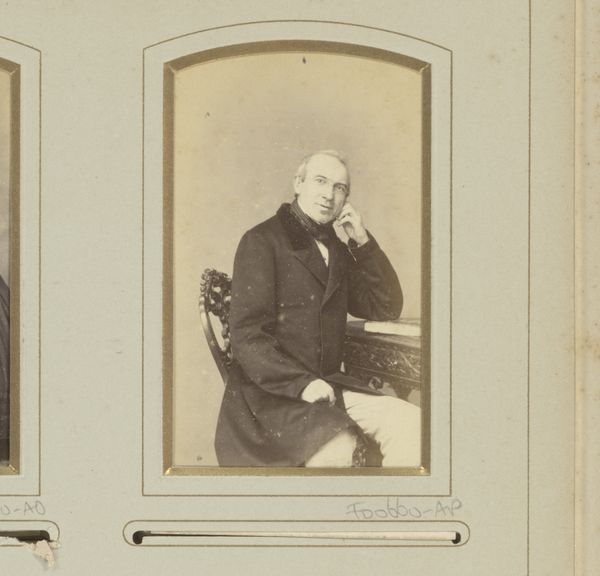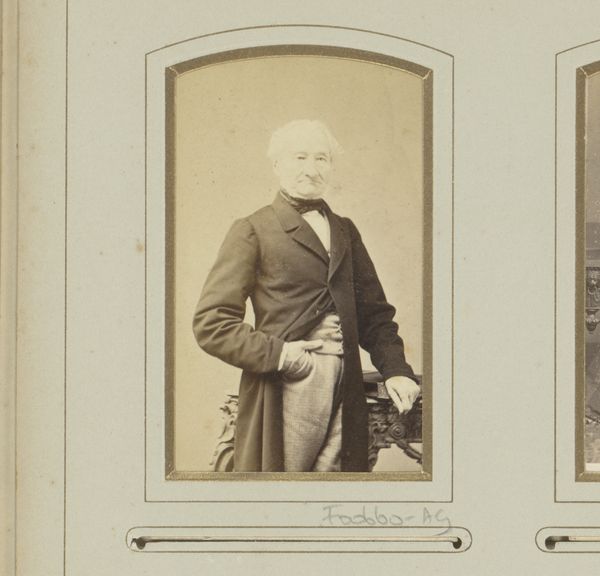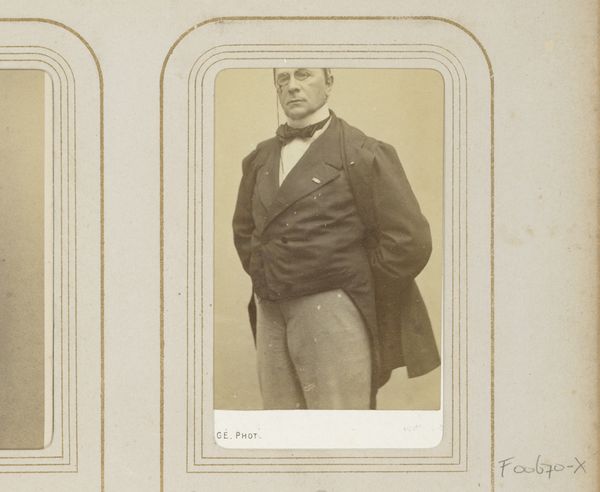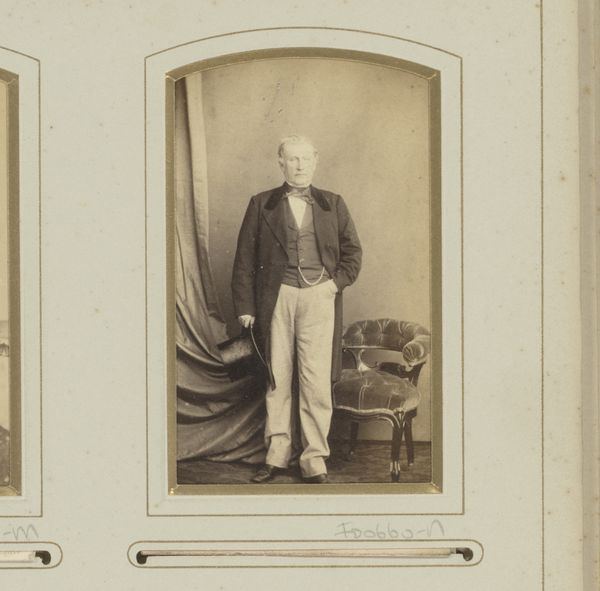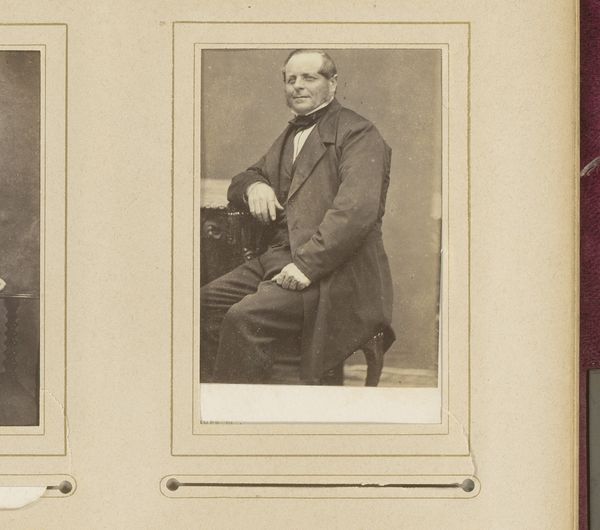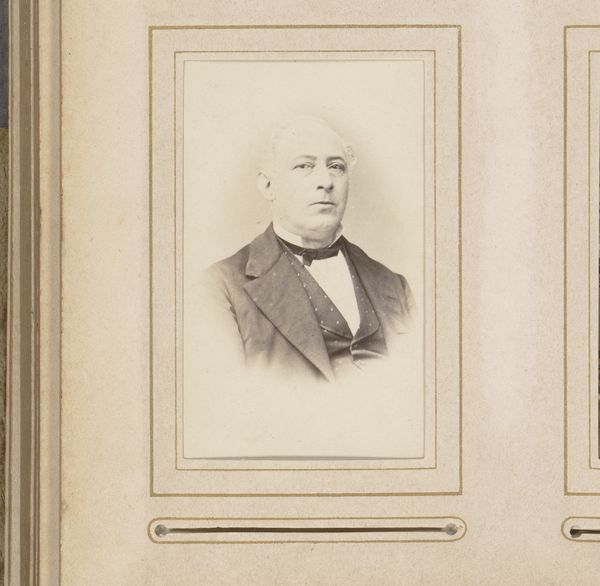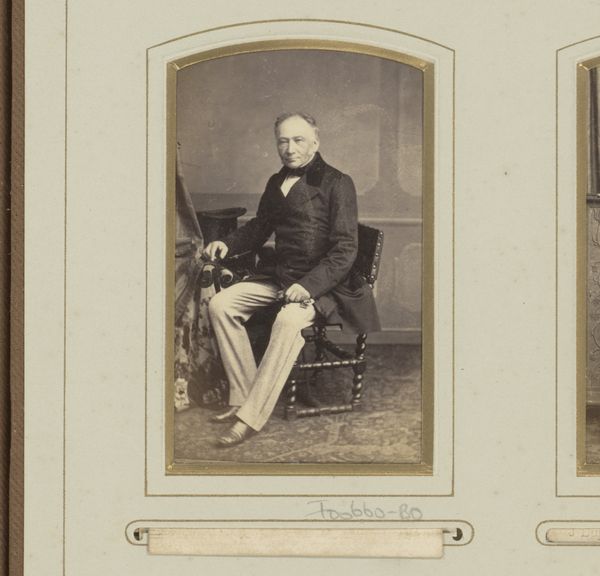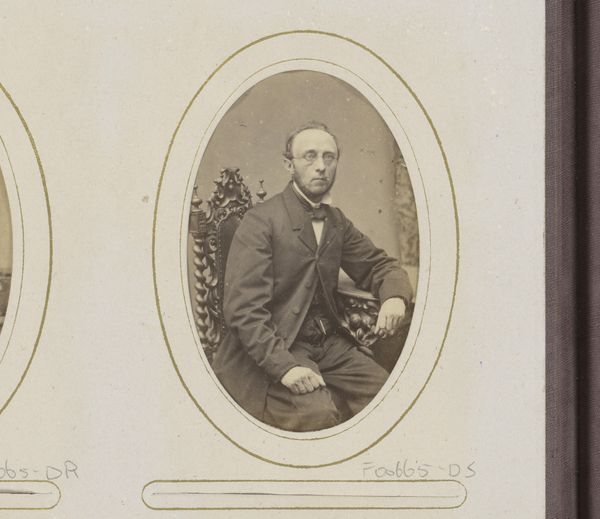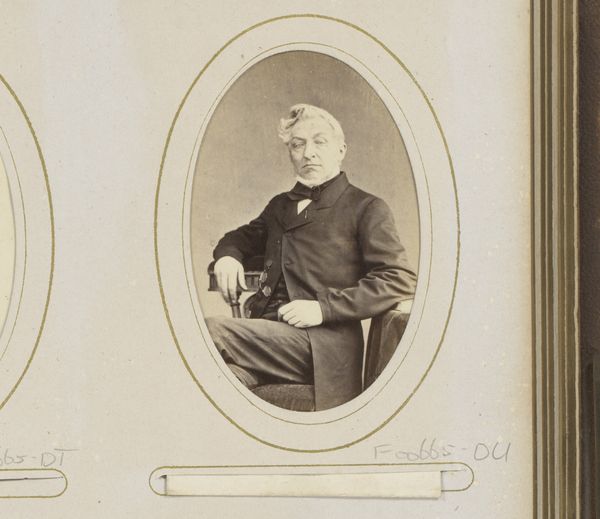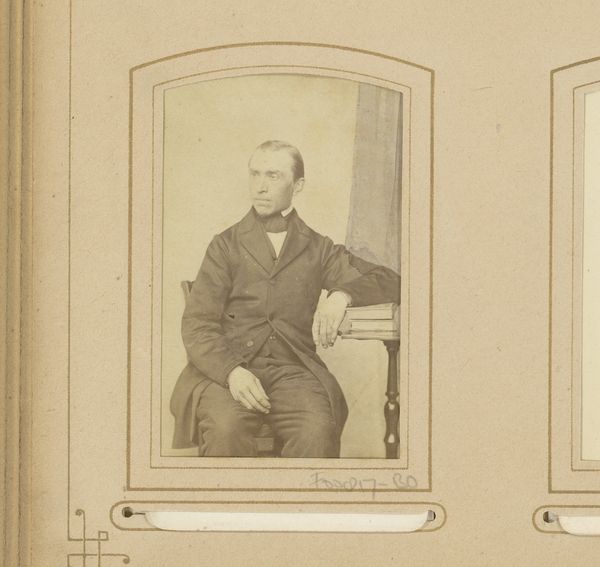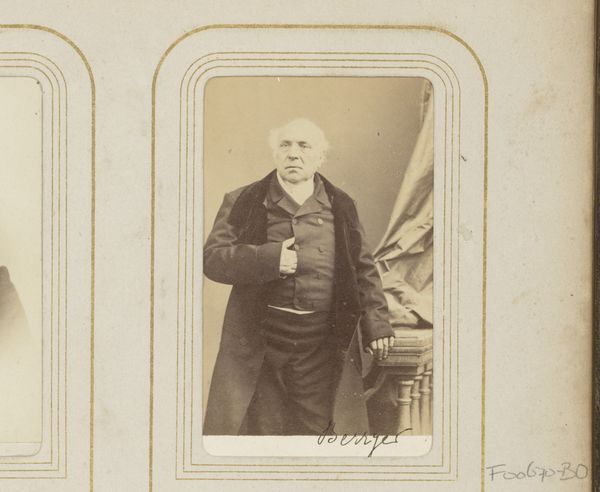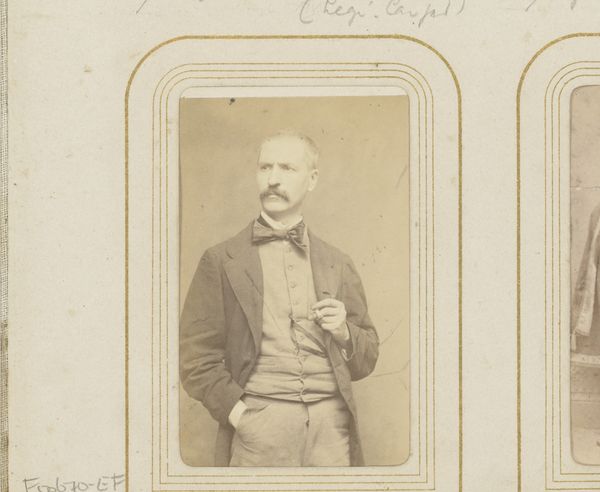
#
aged paper
#
toned paper
#
photo restoration
#
charcoal drawing
#
historical photography
#
portrait reference
#
old-timey
#
yellow element
#
19th century
#
portrait drawing
Dimensions: height 83 mm, width 51 mm
Copyright: Rijks Museum: Open Domain
Editor: Here we have a portrait of Hippolyte Carnot, sometime between 1860 and 1880, by Georges Mathurin Legé. It looks like a photograph that’s been mounted on cardstock. There's an air of seriousness to it. How do you interpret this work, seeing it now? Curator: Immediately, I'm drawn to how this portrait, so seemingly straightforward, exists within a complex web of 19th-century social dynamics. Hippolyte Carnot was a prominent politician and educator, deeply involved in shaping French republican ideals. Knowing this, consider how the very act of creating and displaying this portrait—its accessibility—speaks to the burgeoning power of the middle class and the shift away from aristocratic forms of representation. What does this image say about how power was being constructed and visualized at the time? Editor: That’s fascinating. I hadn't considered the political context. It's more than just a picture; it's a statement. Curator: Precisely. Look at his clothing, his posture, even the plain background. There’s a deliberate attempt to project an image of respectability, trustworthiness – virtues central to republican ideology. Also note that photography itself, still relatively new, democratized portraiture. Instead of needing a painter, a wider segment of society could capture their likeness. Doesn’t this make you consider the possibilities for challenging established power structures that this new medium enabled? Editor: Absolutely. It’s like he’s trying to say something about his values through the portrait. What’s most intriguing is the silence surrounding the challenges photography posed to painting, and by extension, social structures. Curator: Indeed. This portrait, while appearing simple, holds layers of meaning when we examine it through the lenses of politics, class, and technological change. Seeing it in the light of contemporary theories on identity, it provides an avenue to analyze 19th-century representation. Editor: I’ll definitely look at 19th-century portraiture with a fresh perspective going forward!
Comments
No comments
Be the first to comment and join the conversation on the ultimate creative platform.
